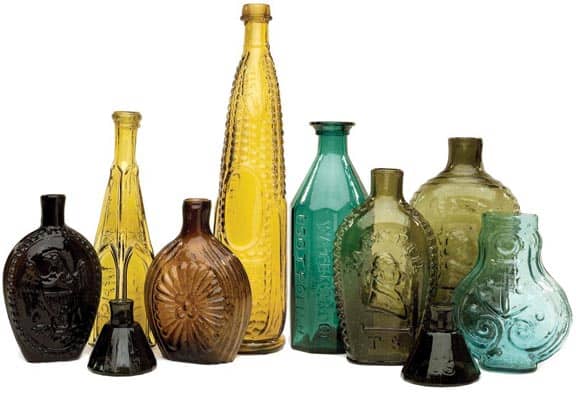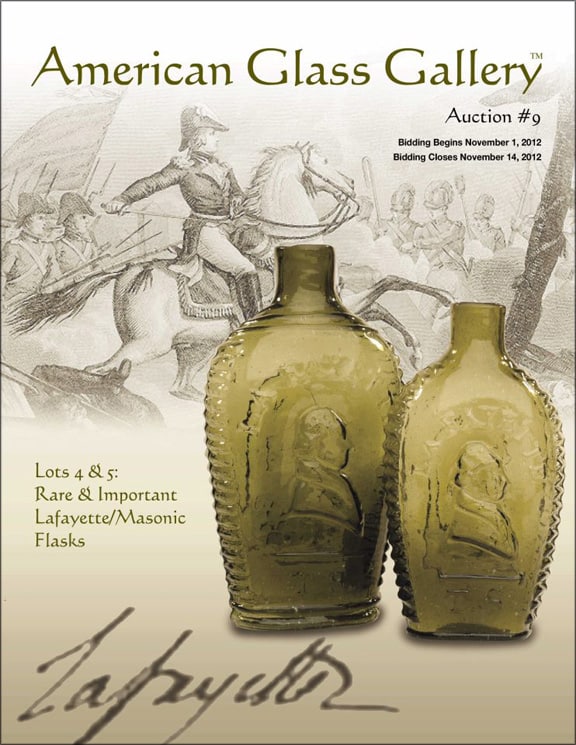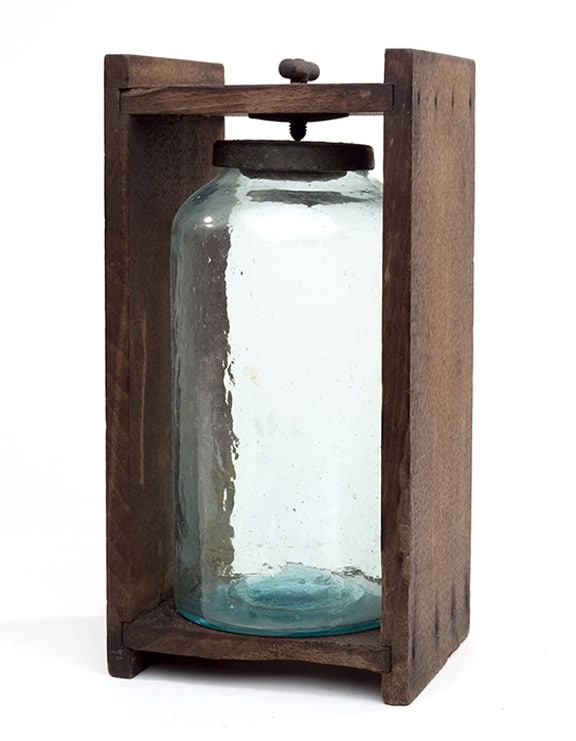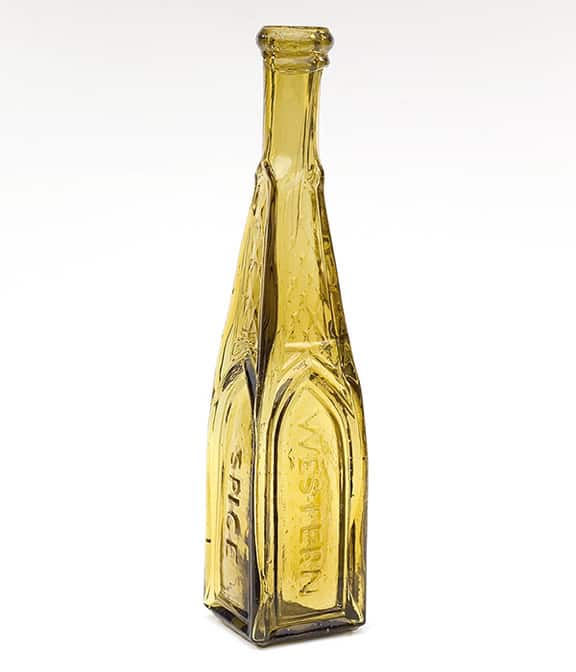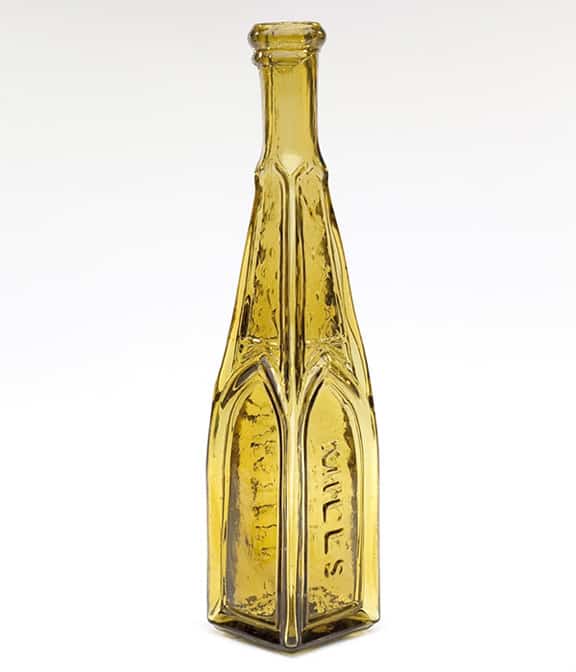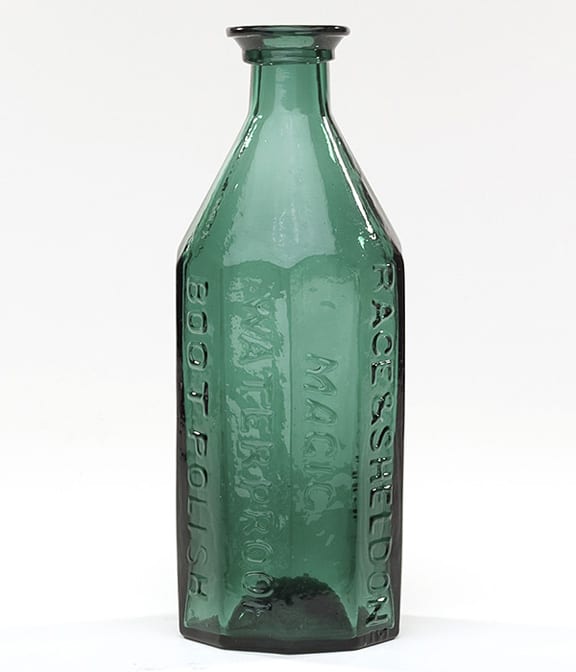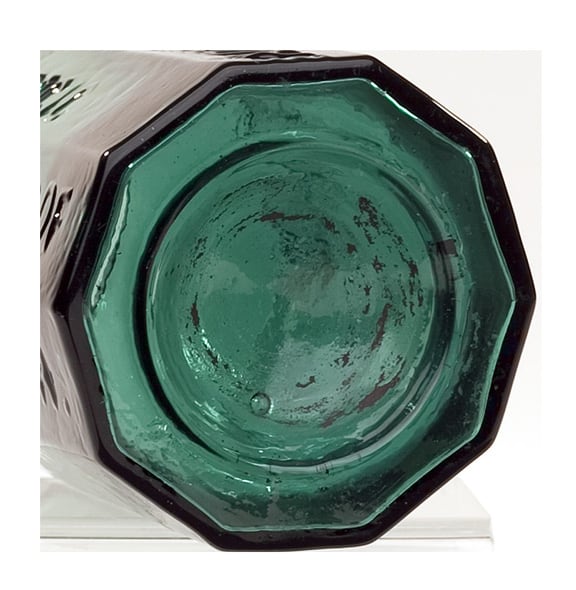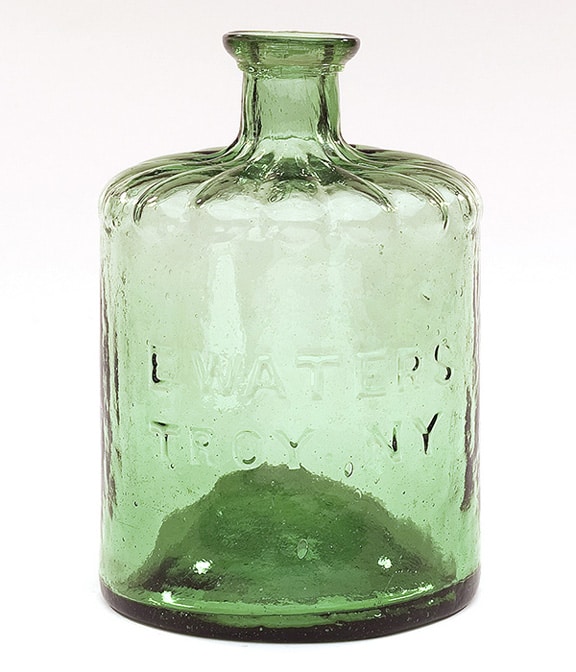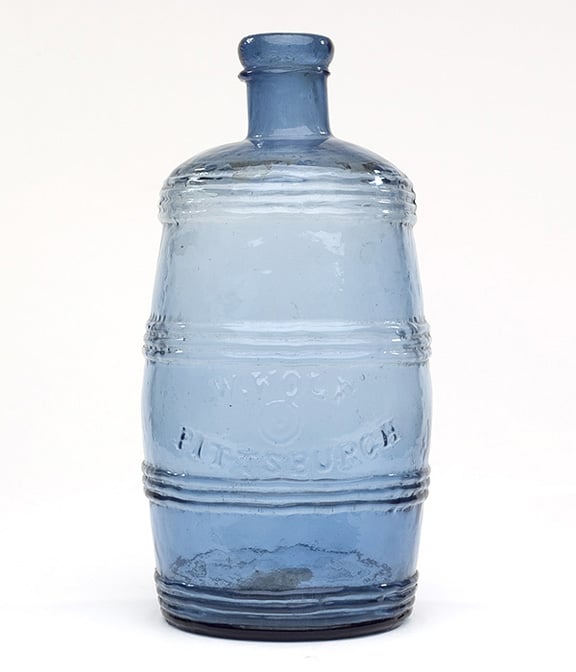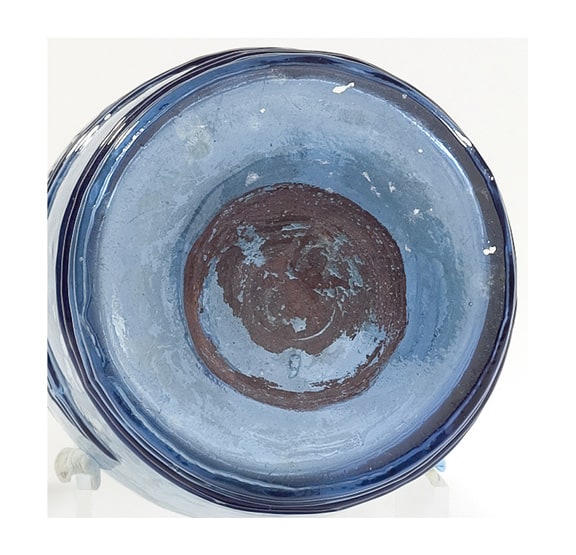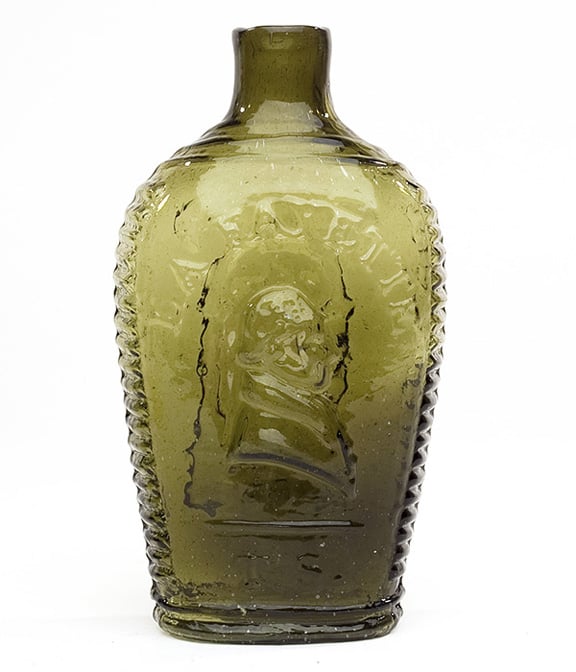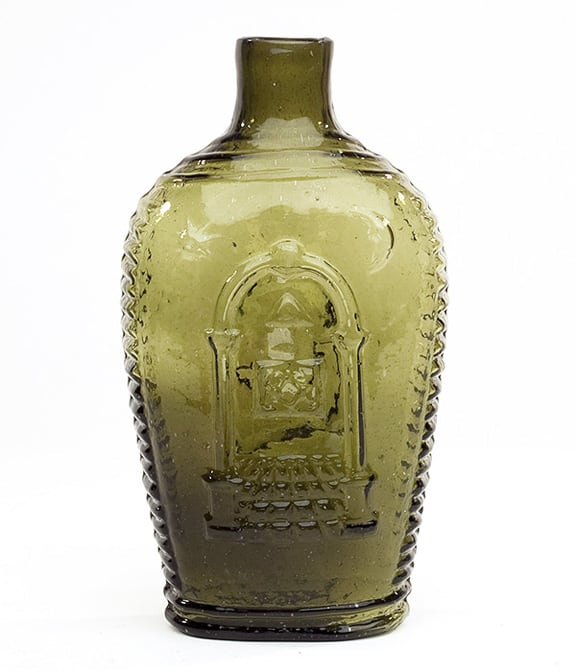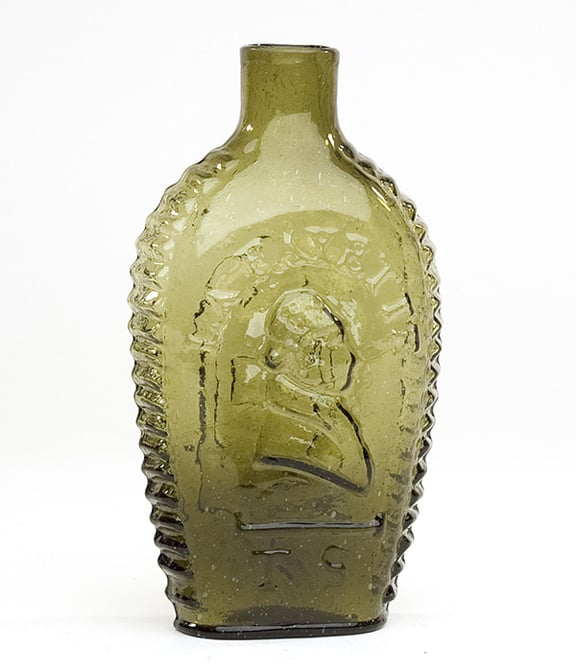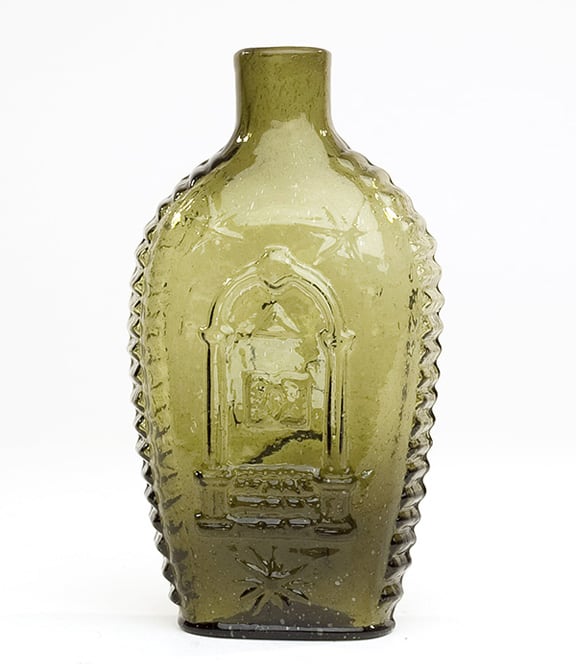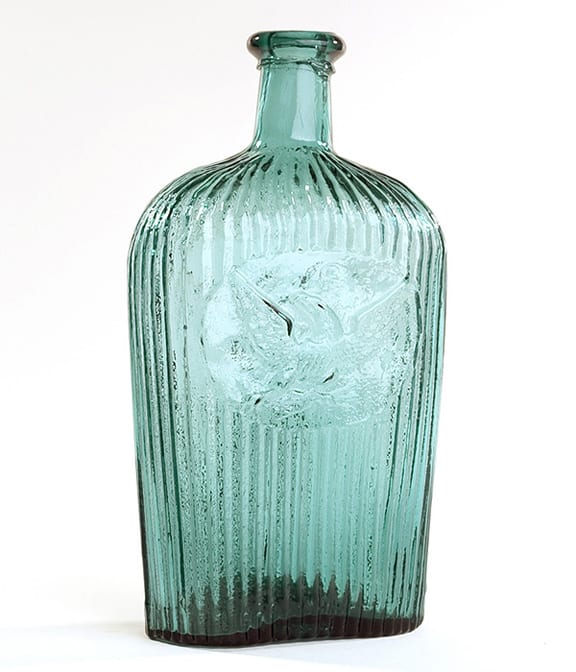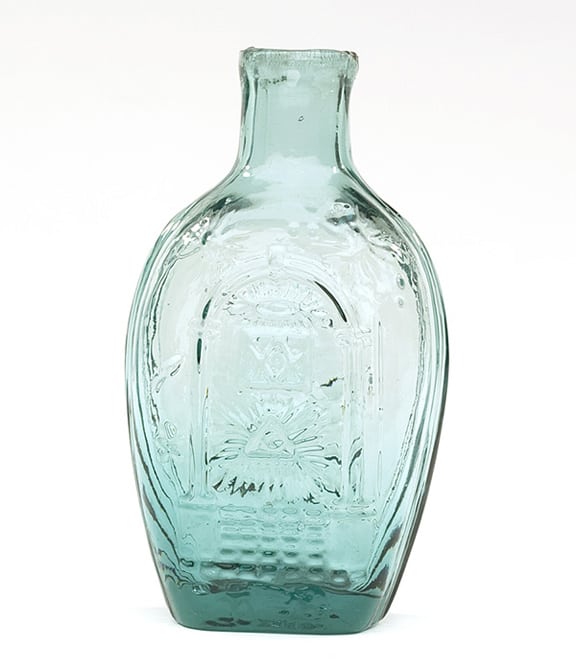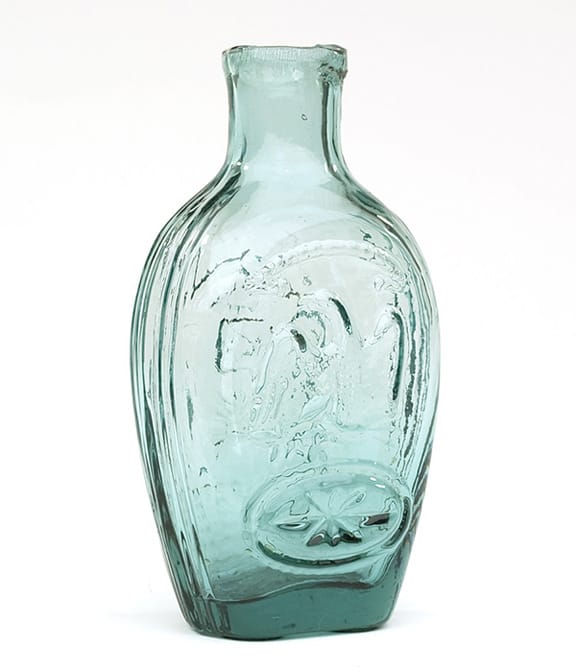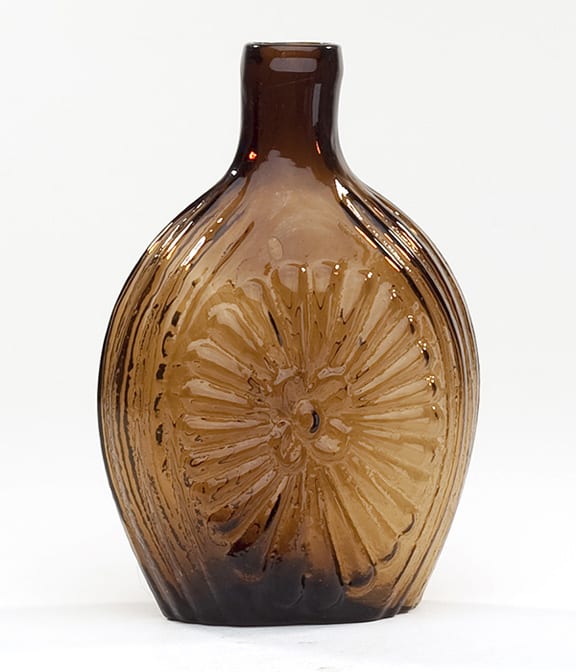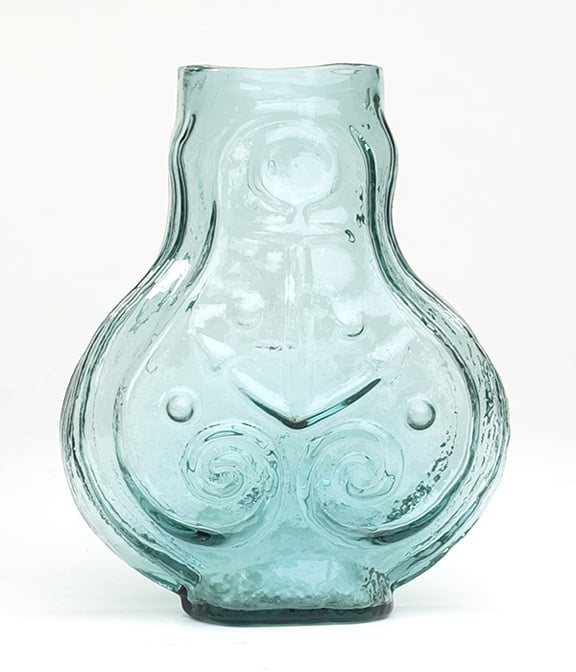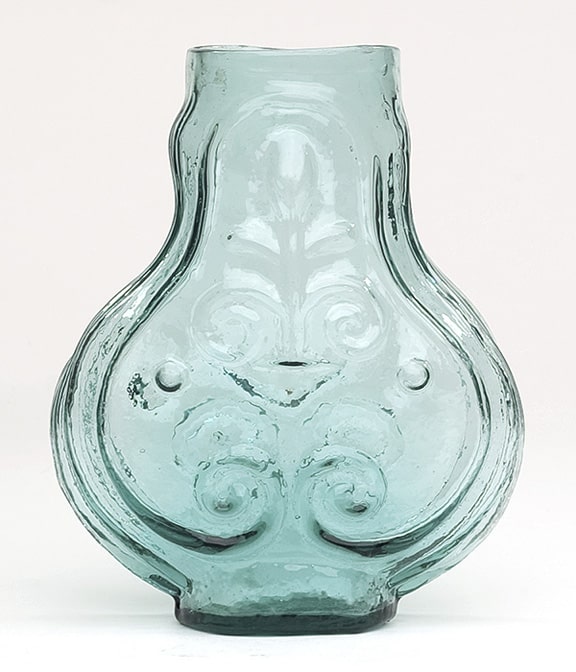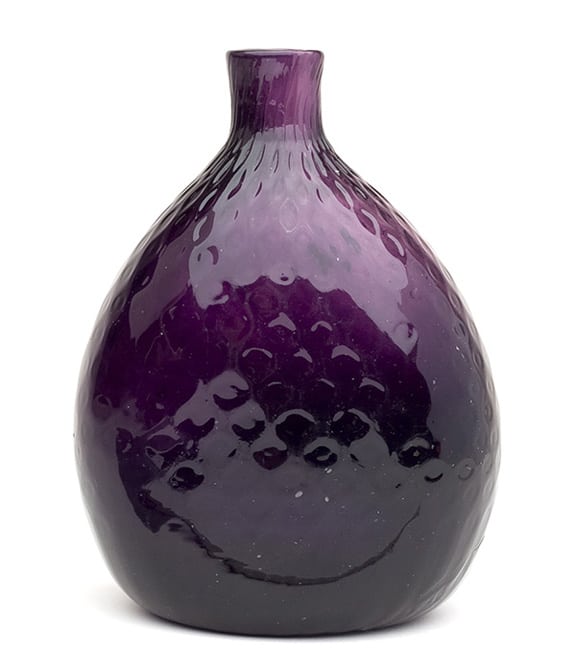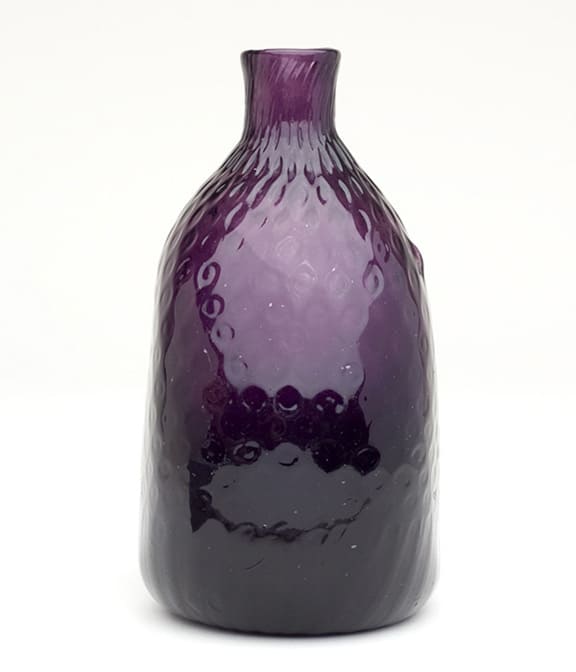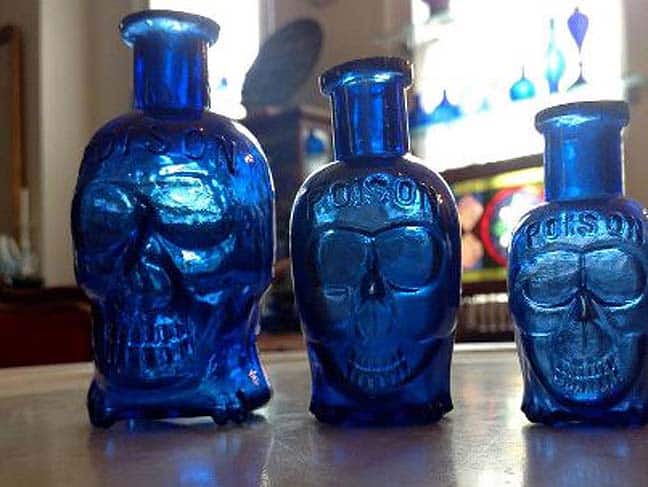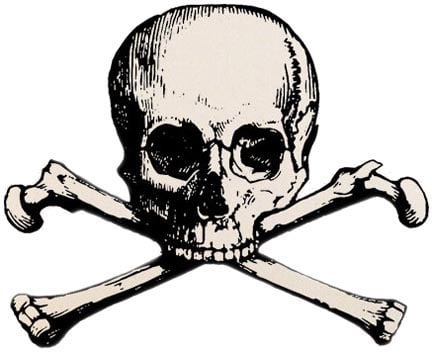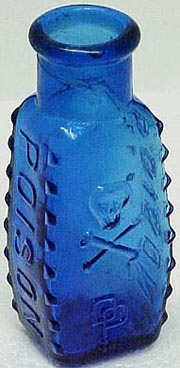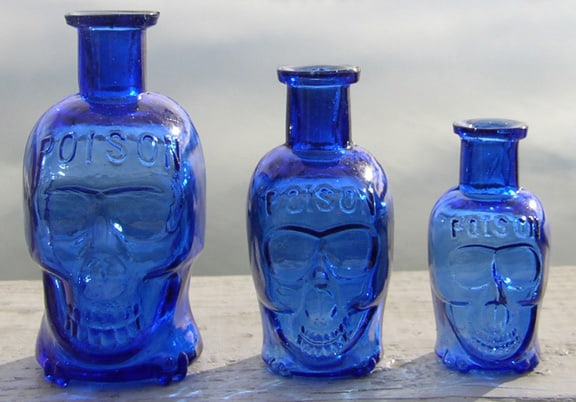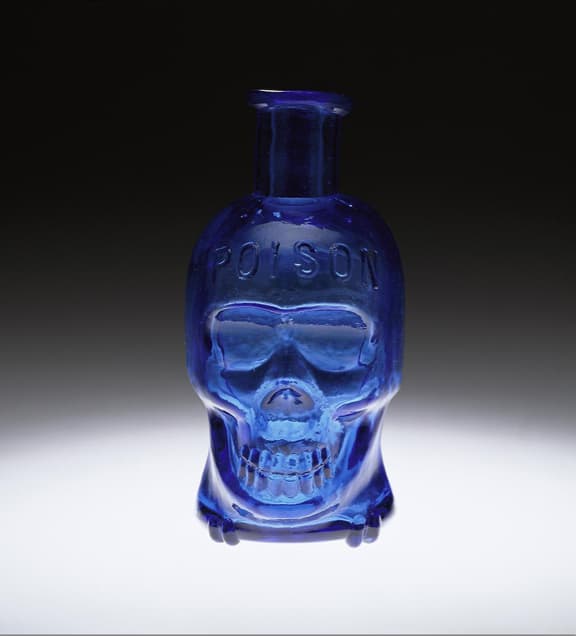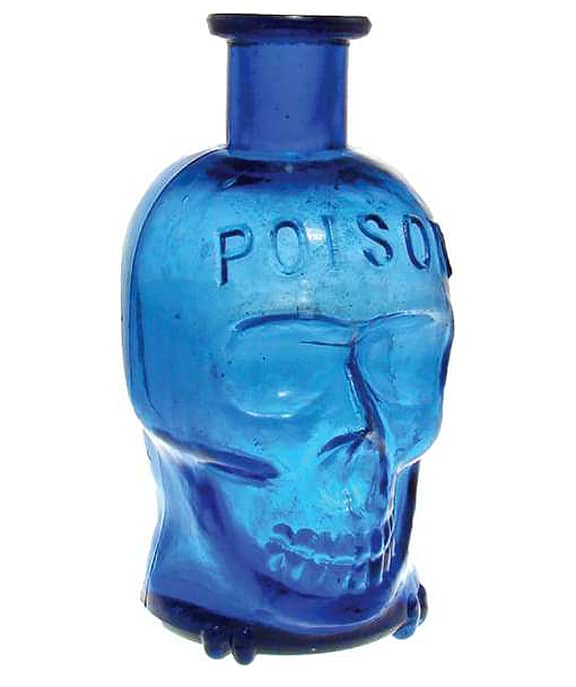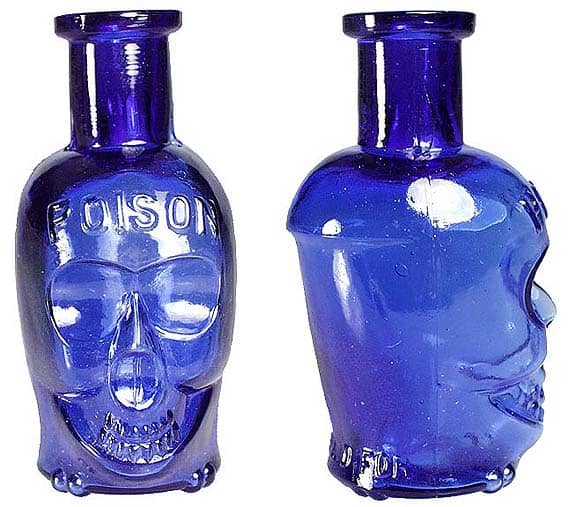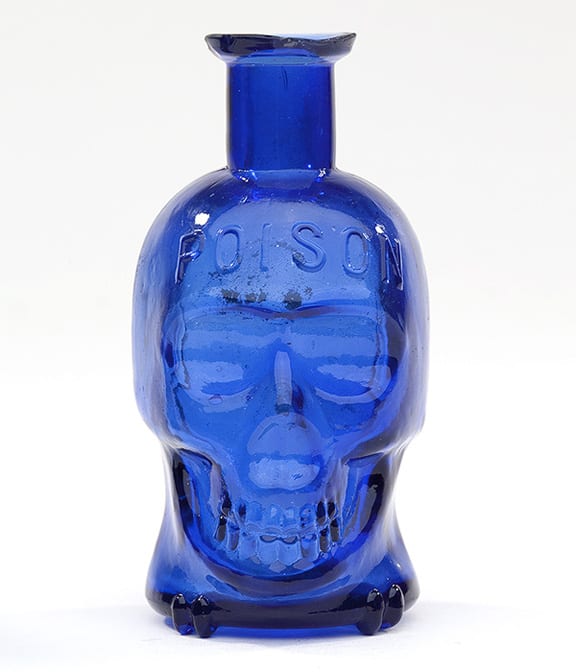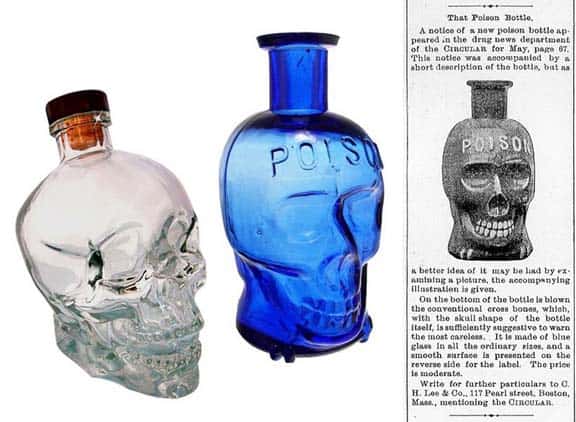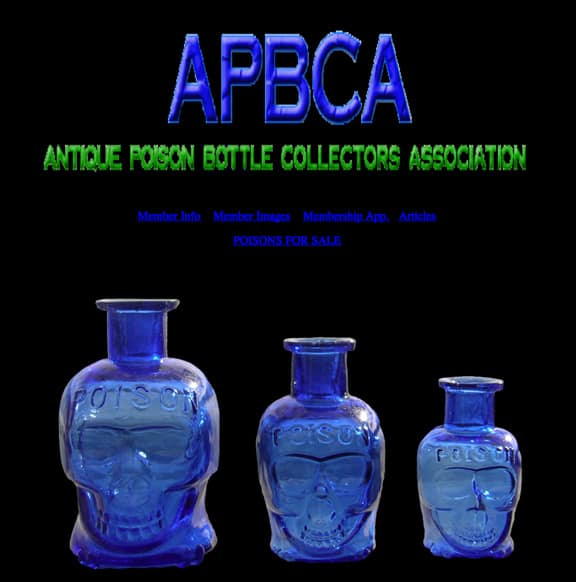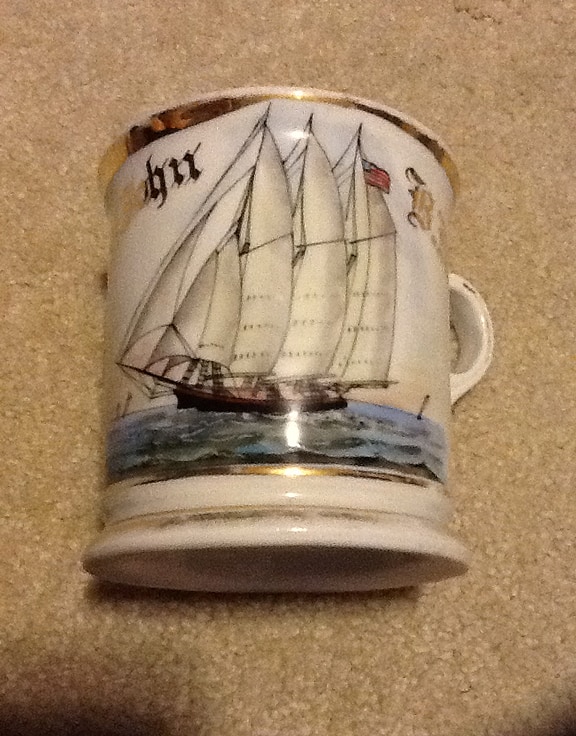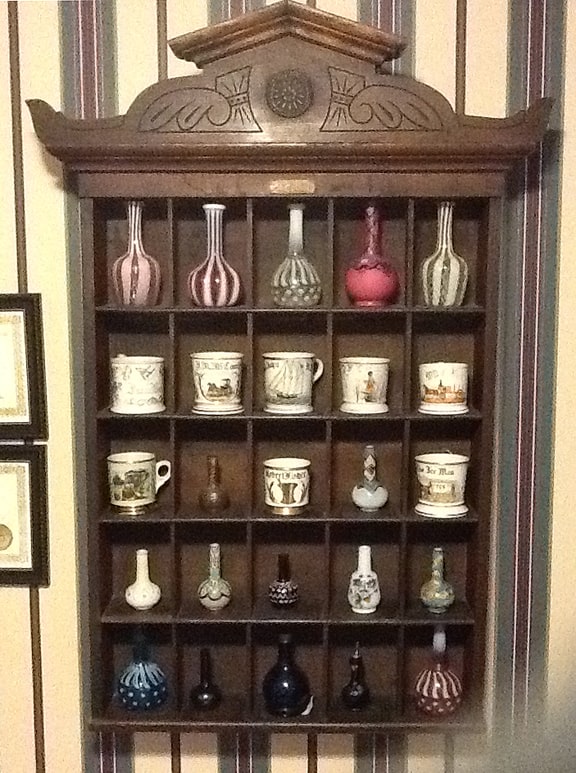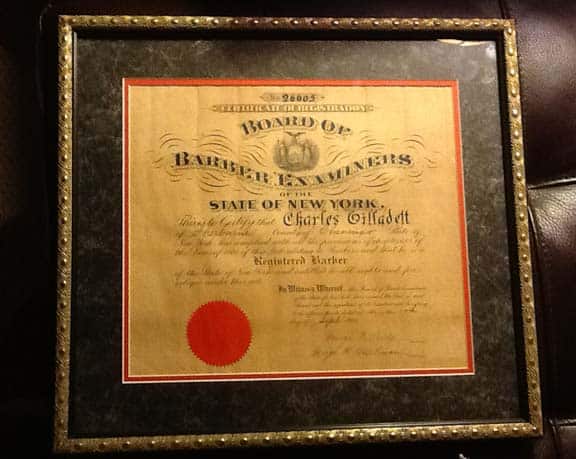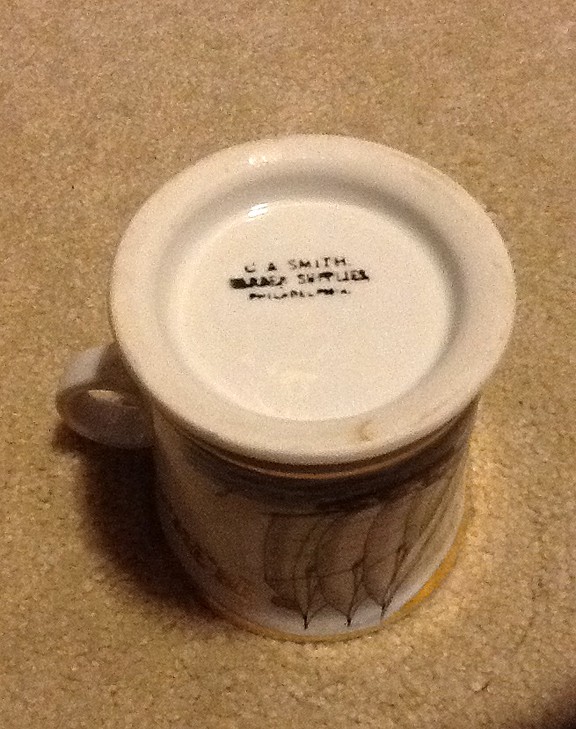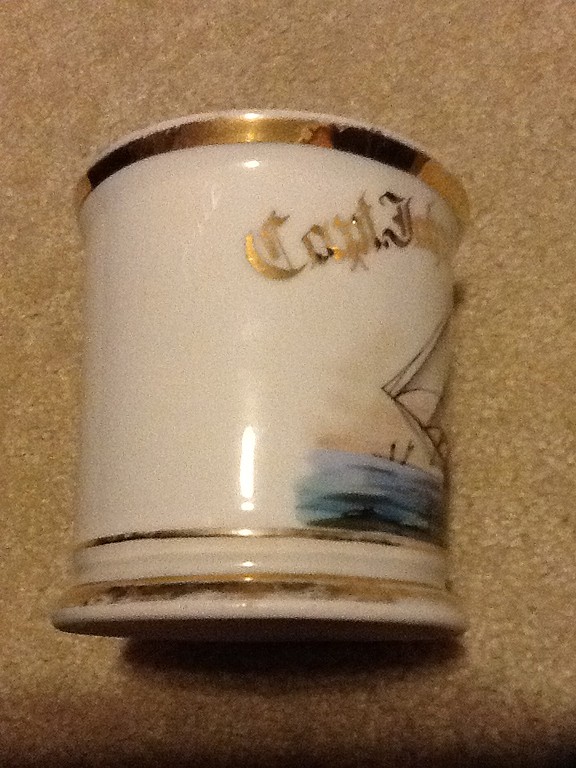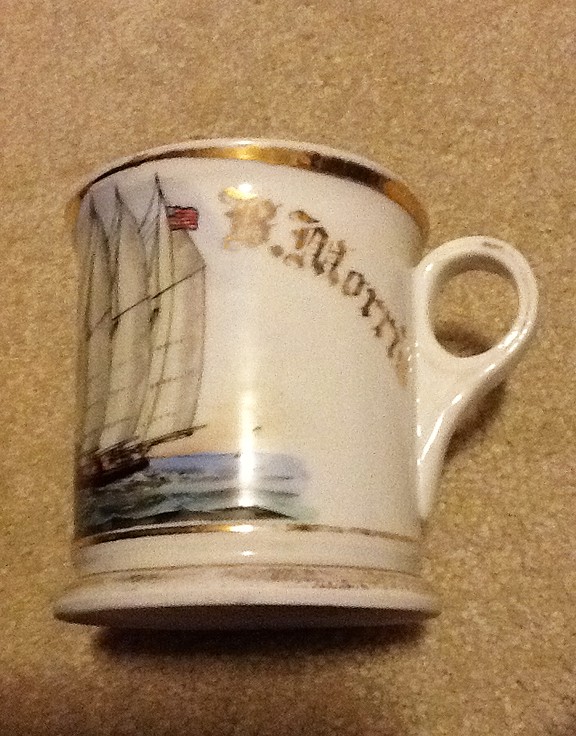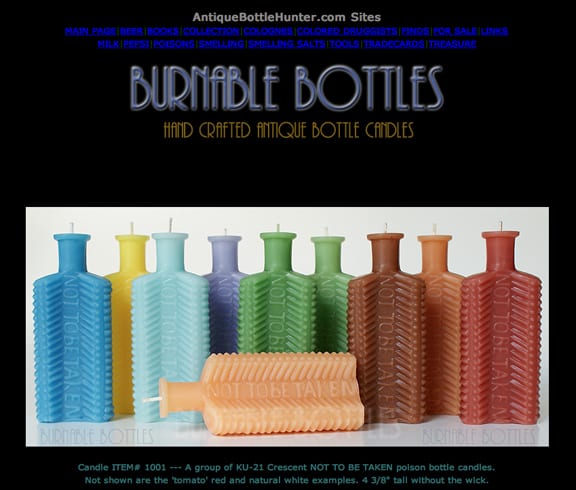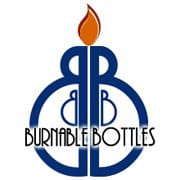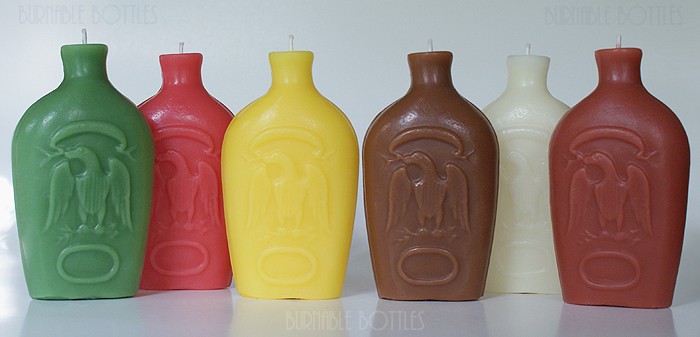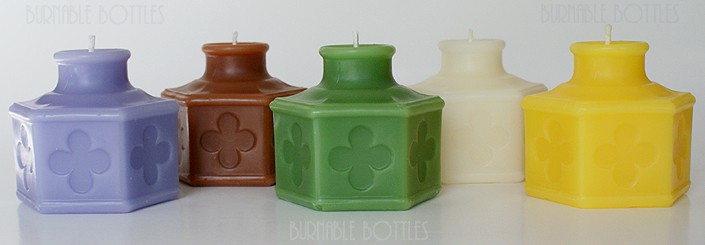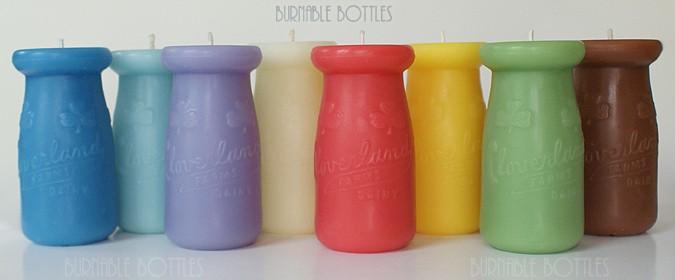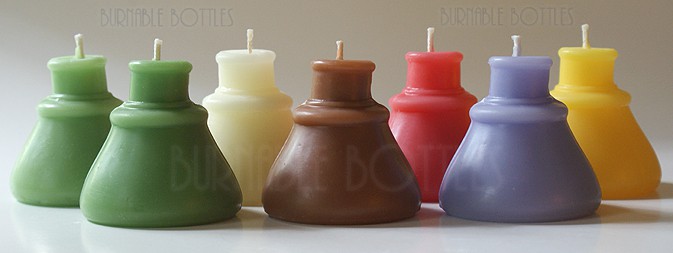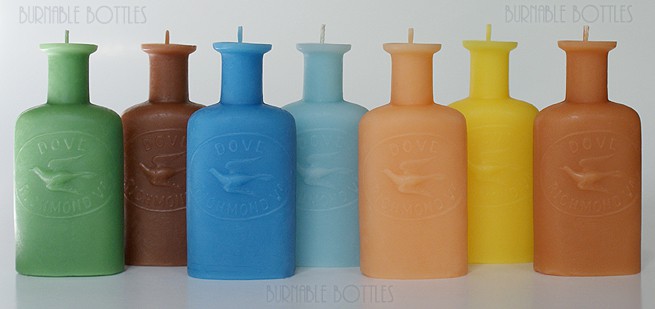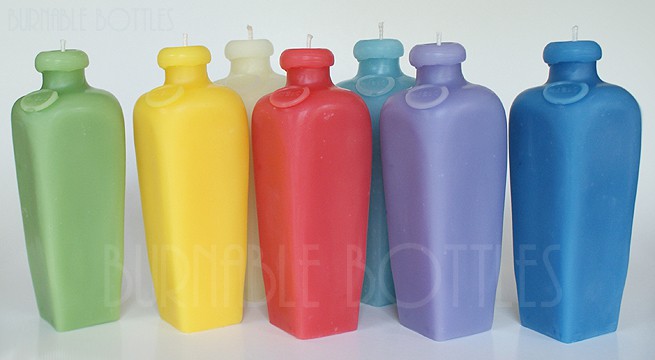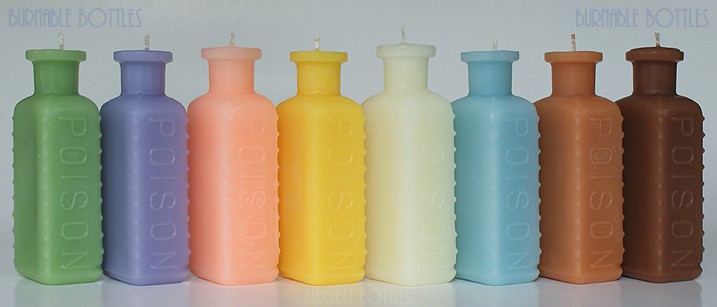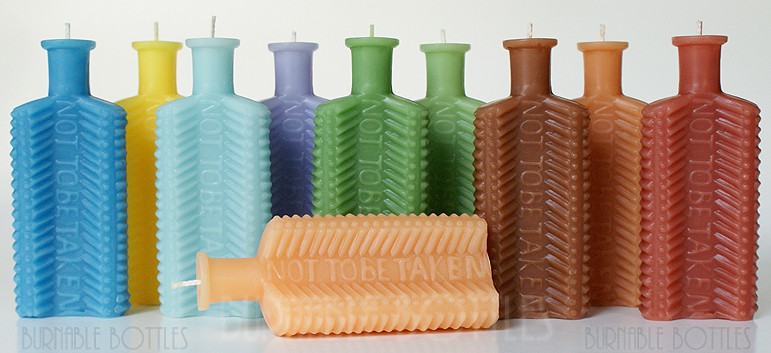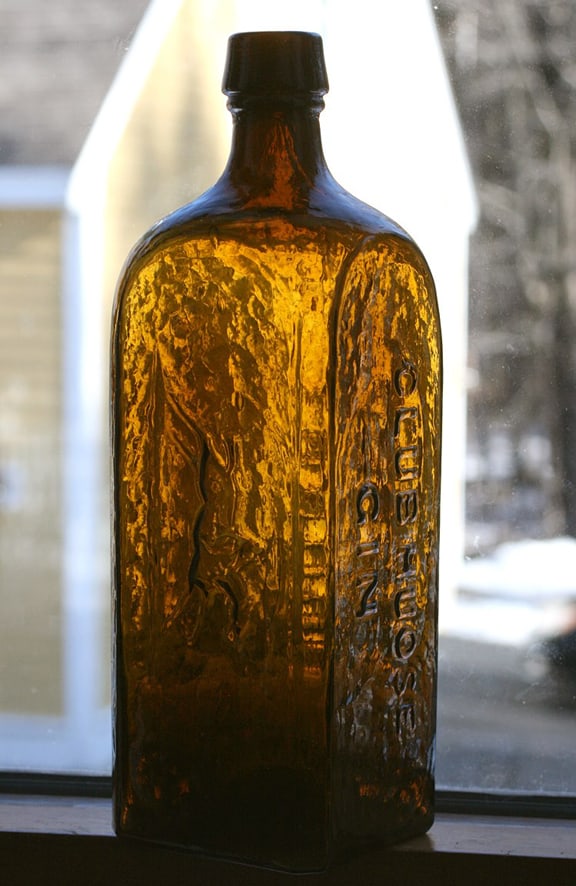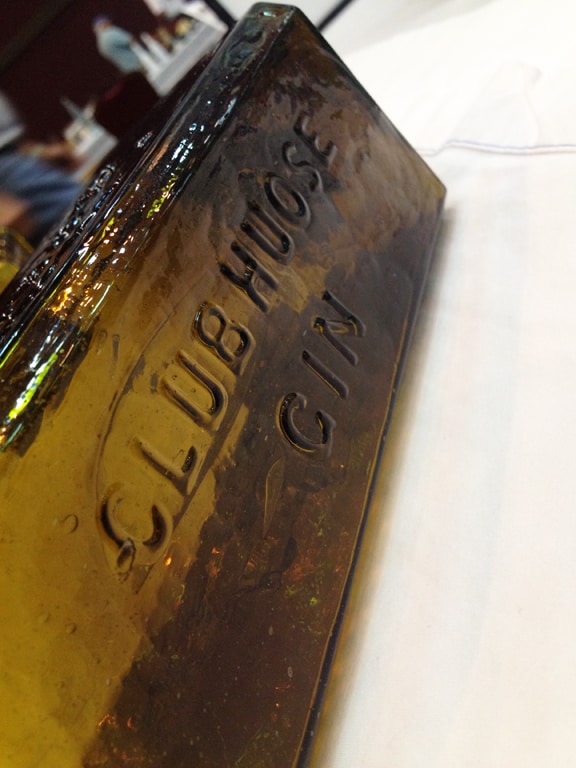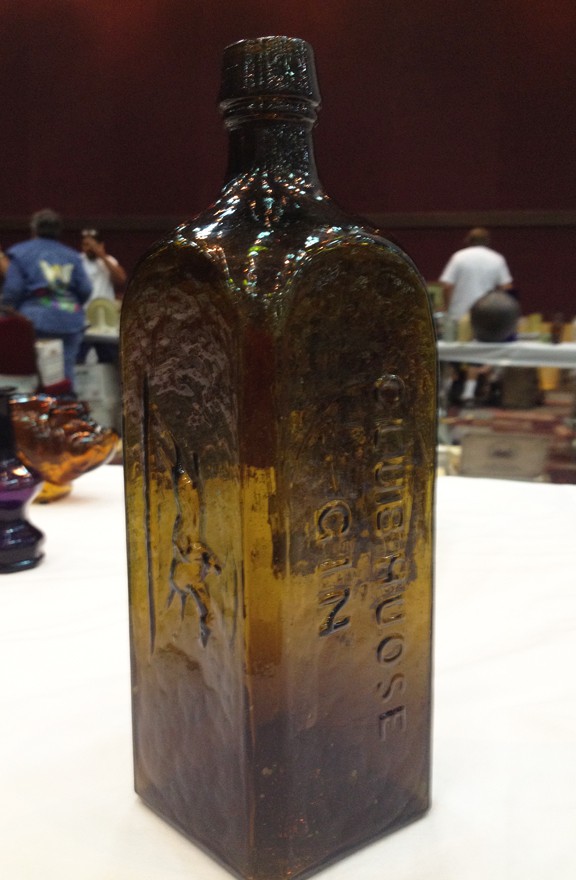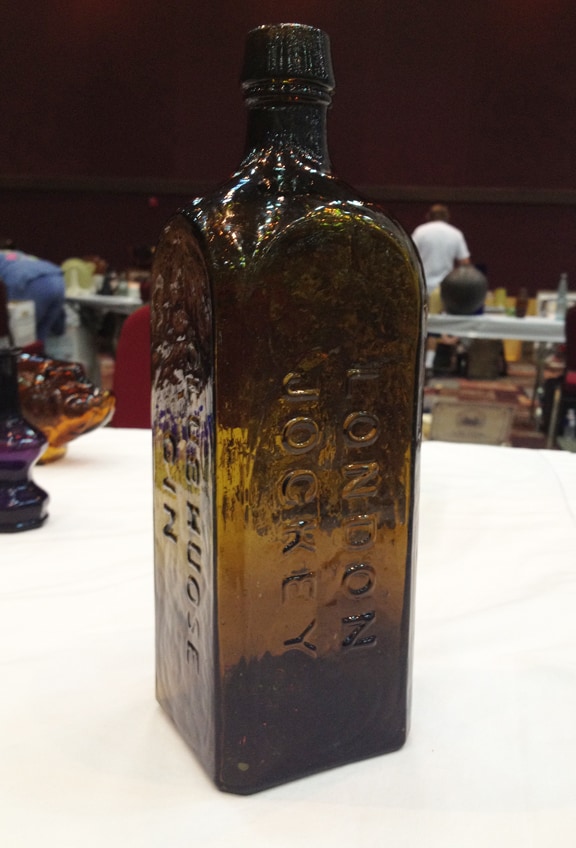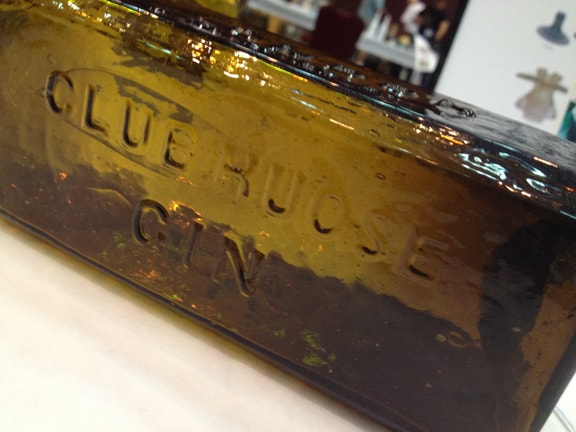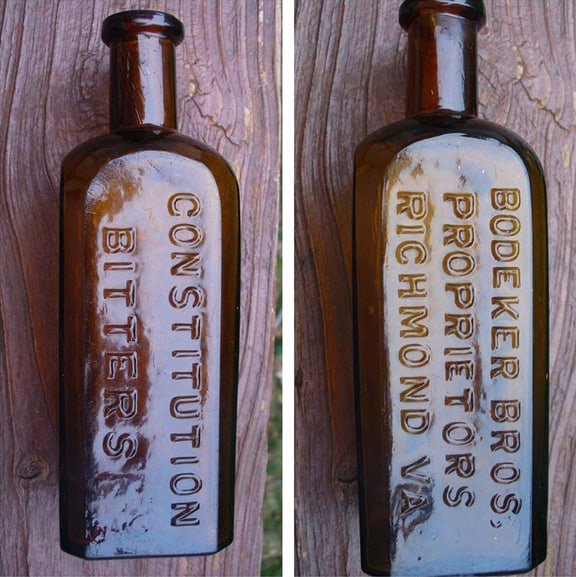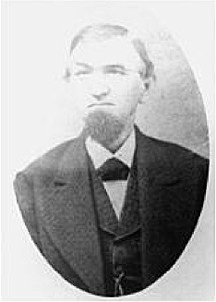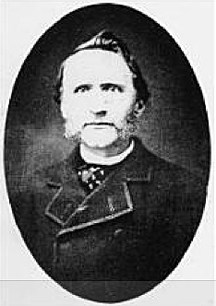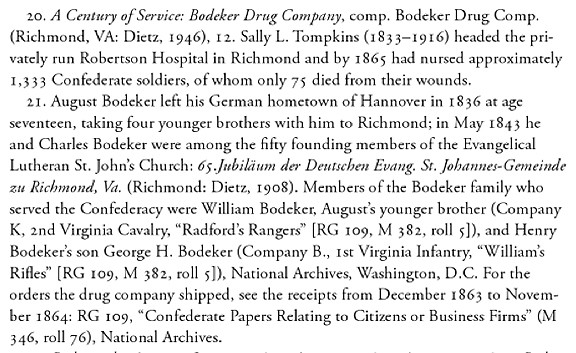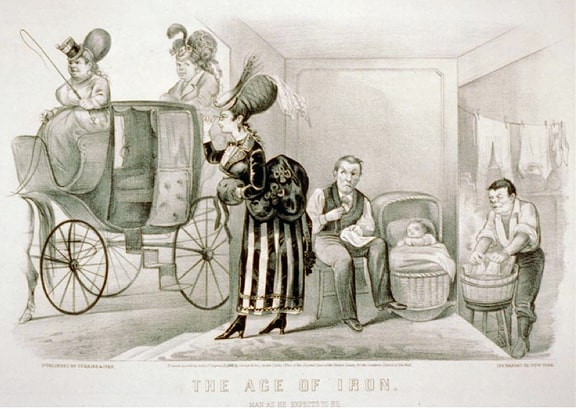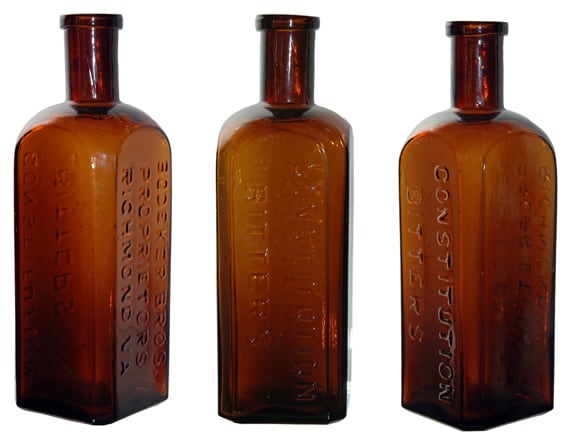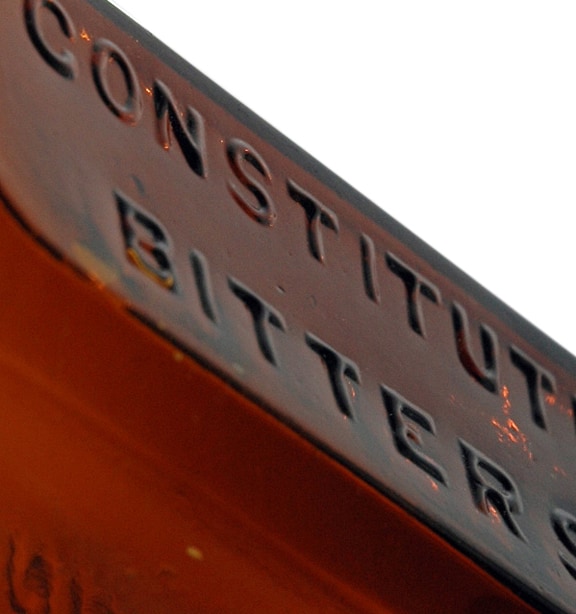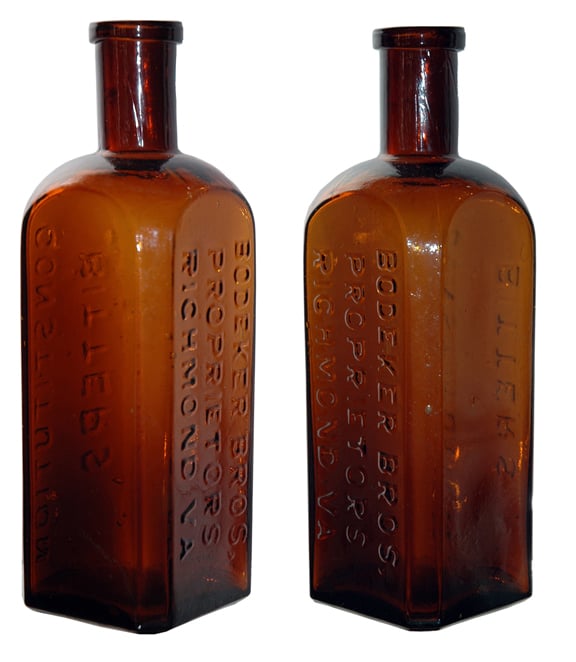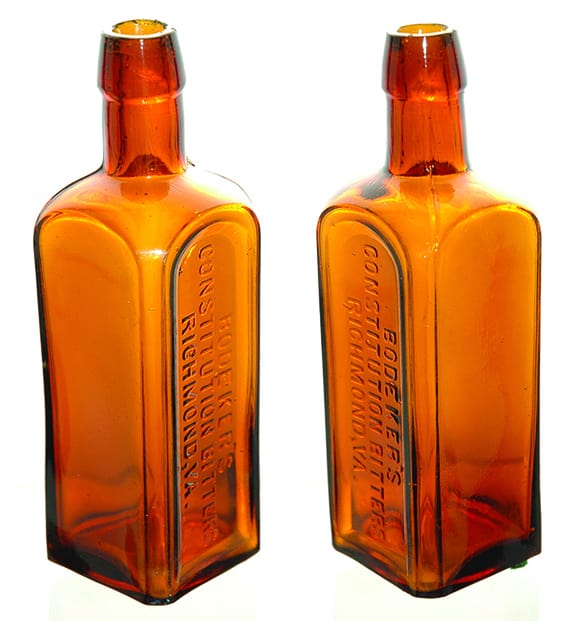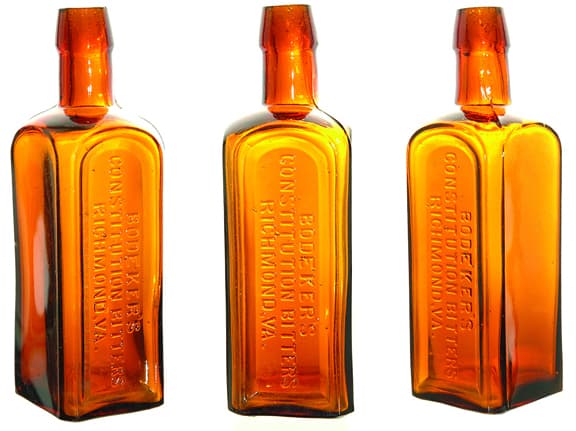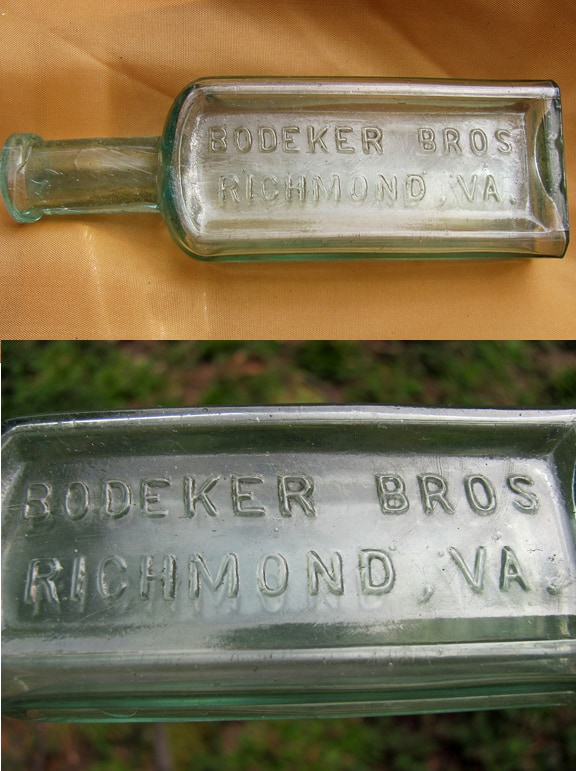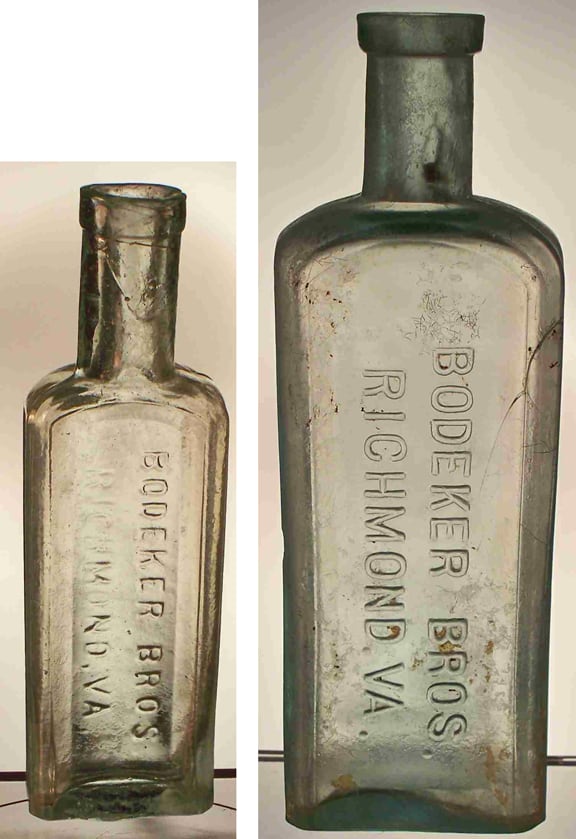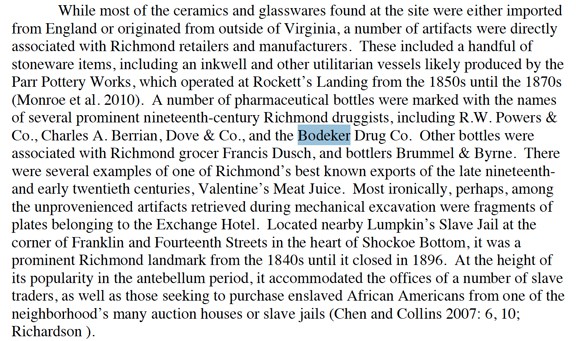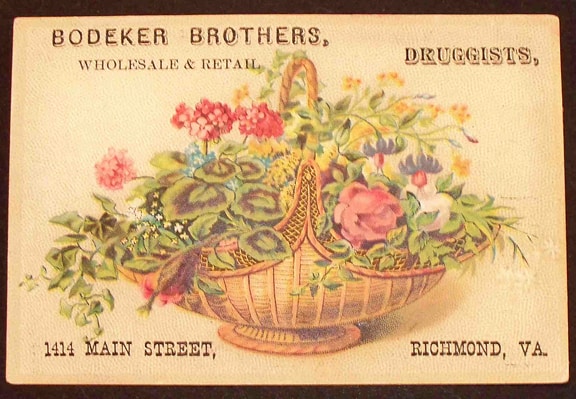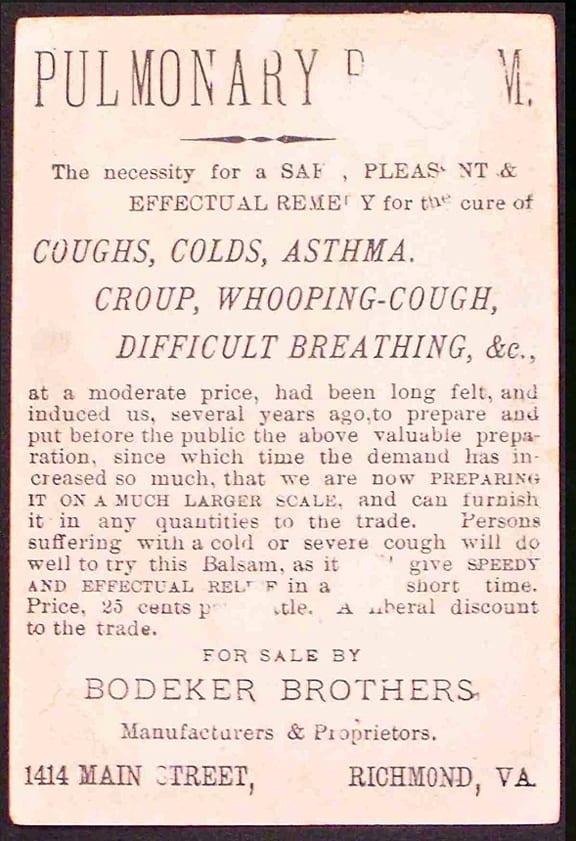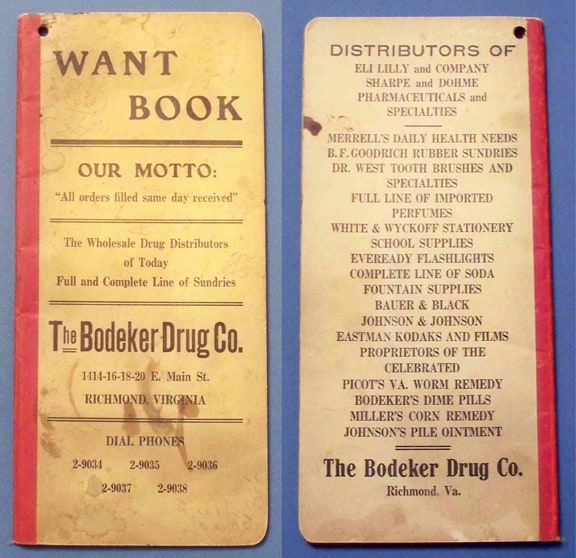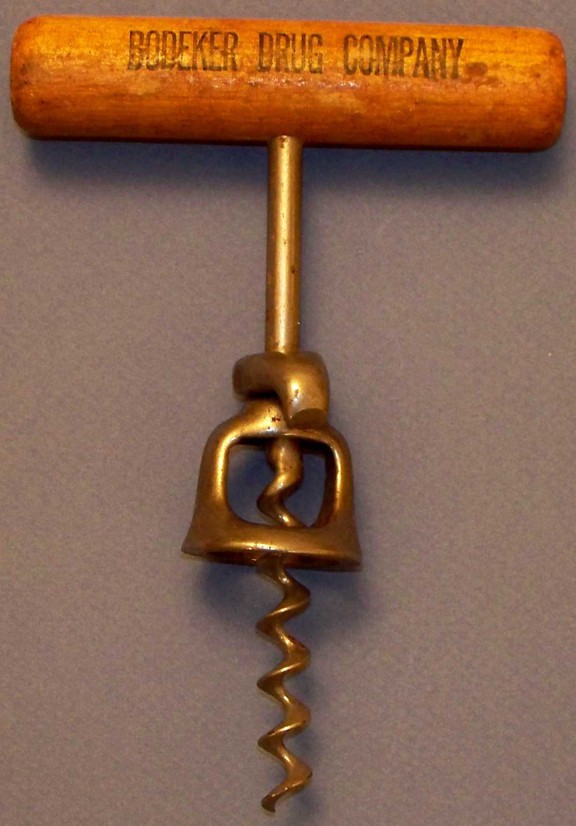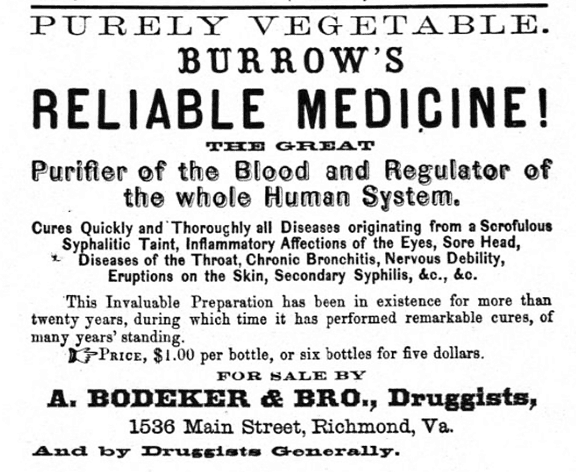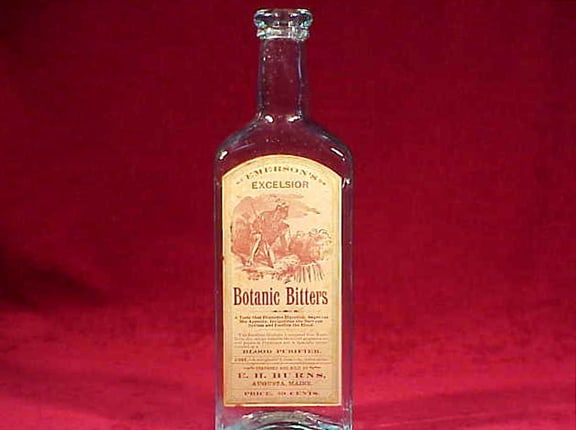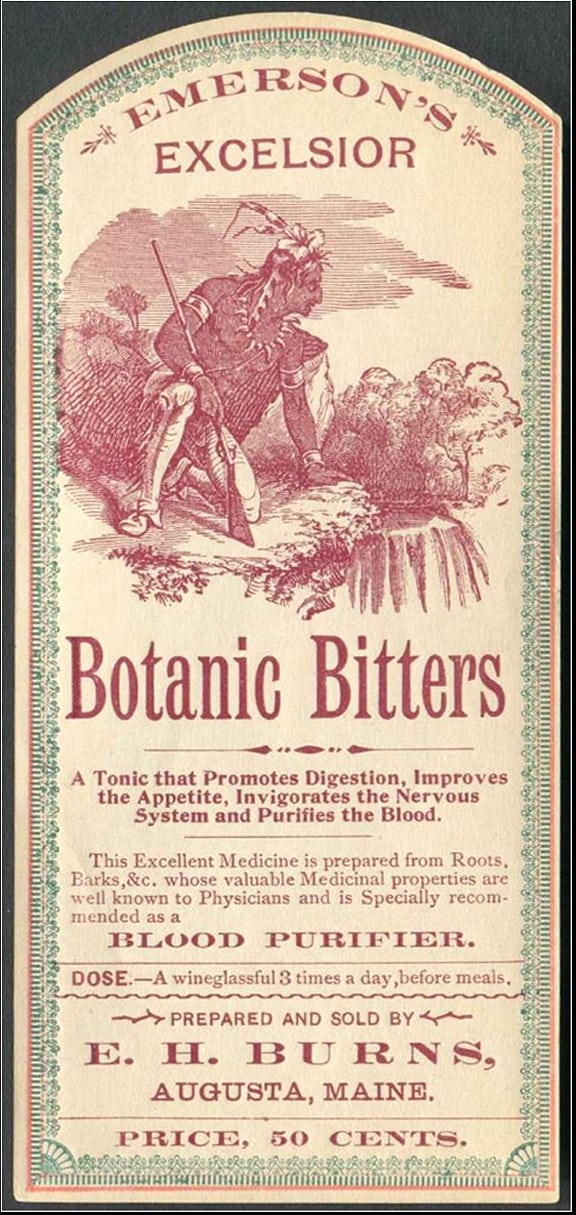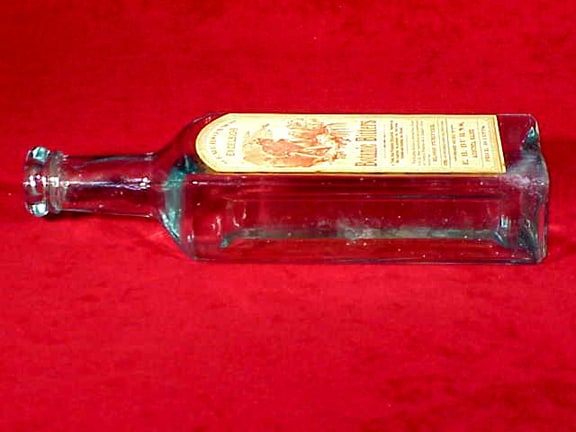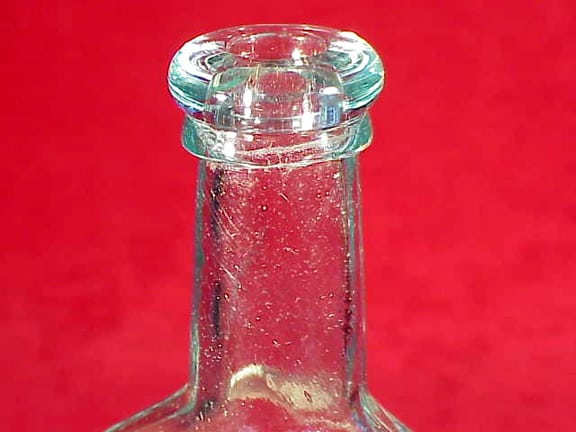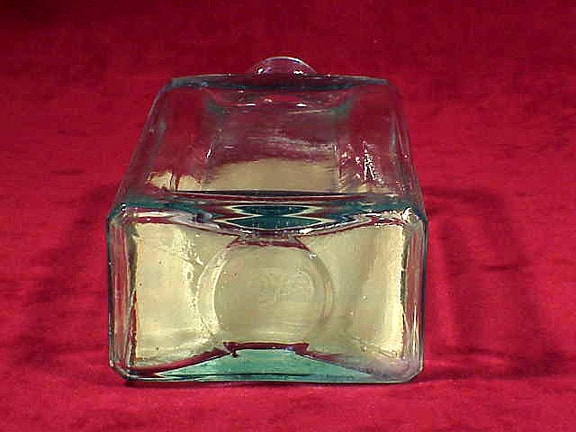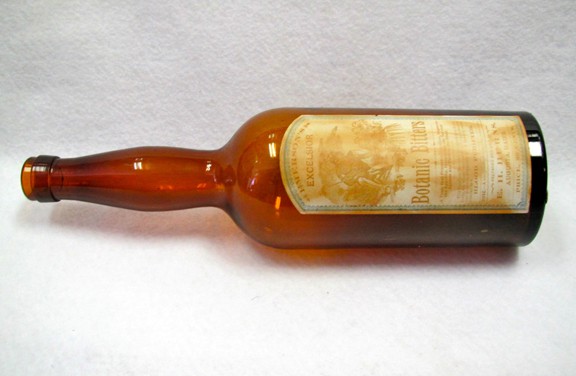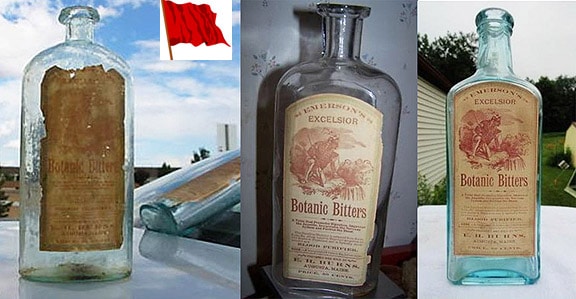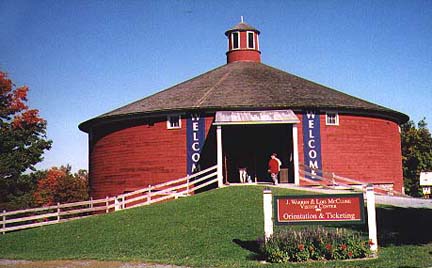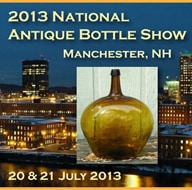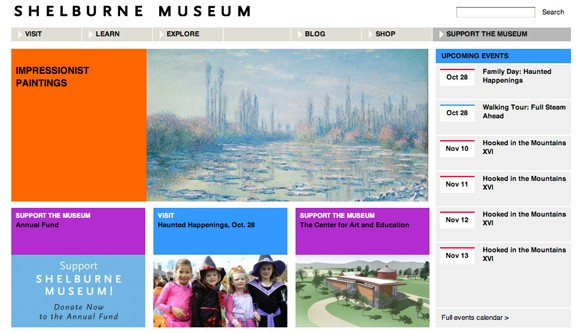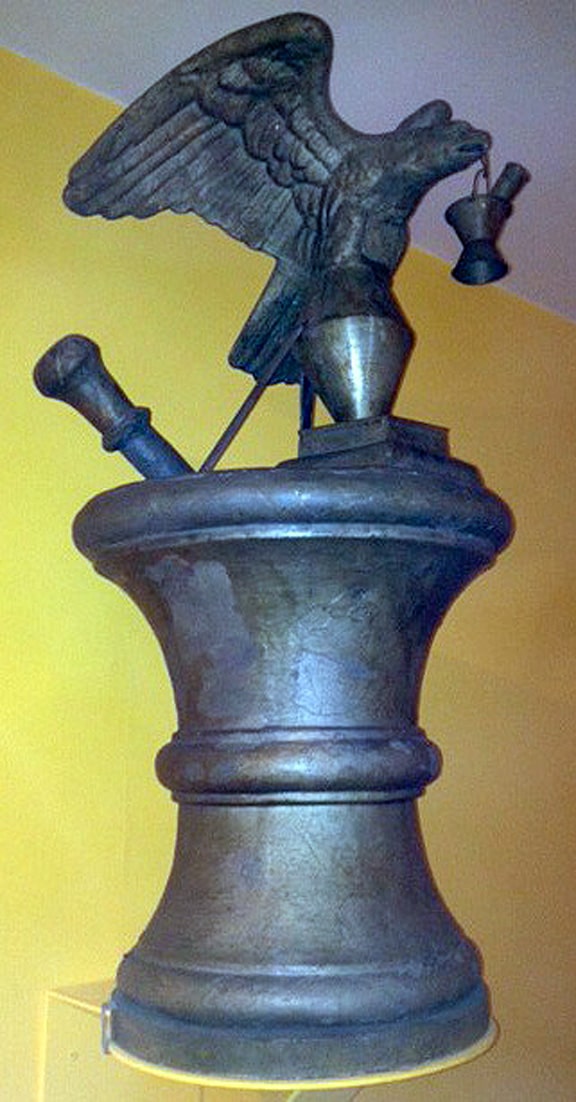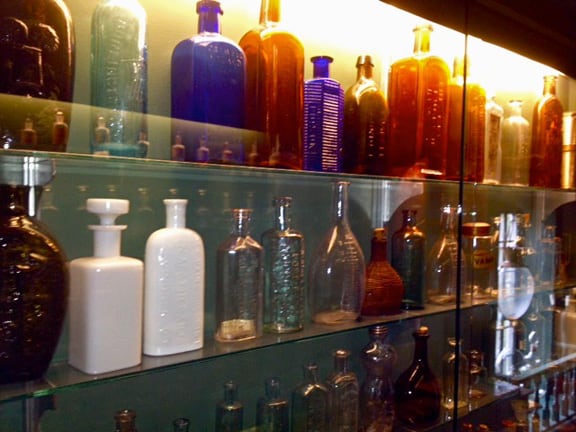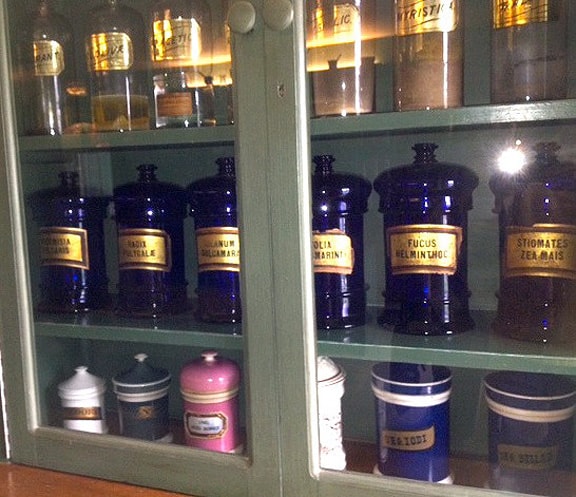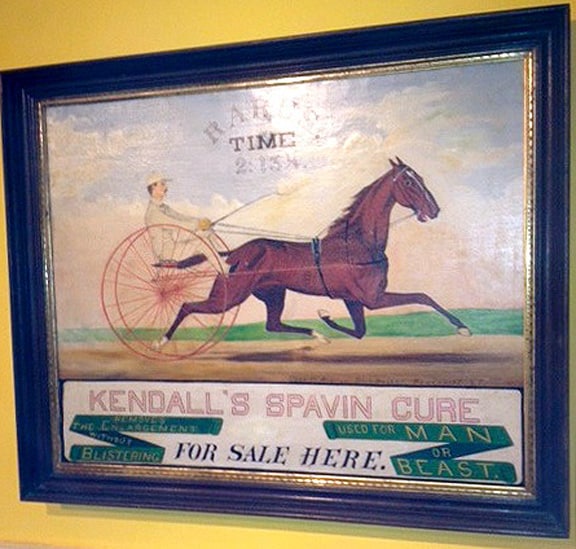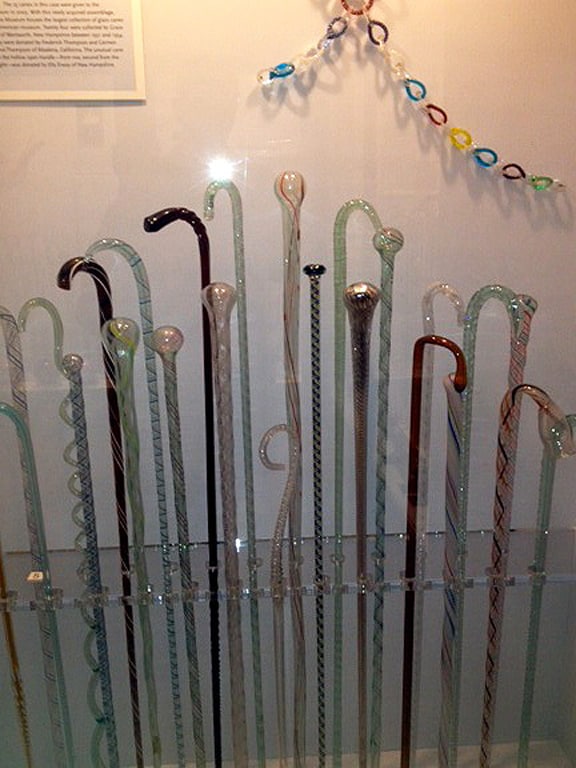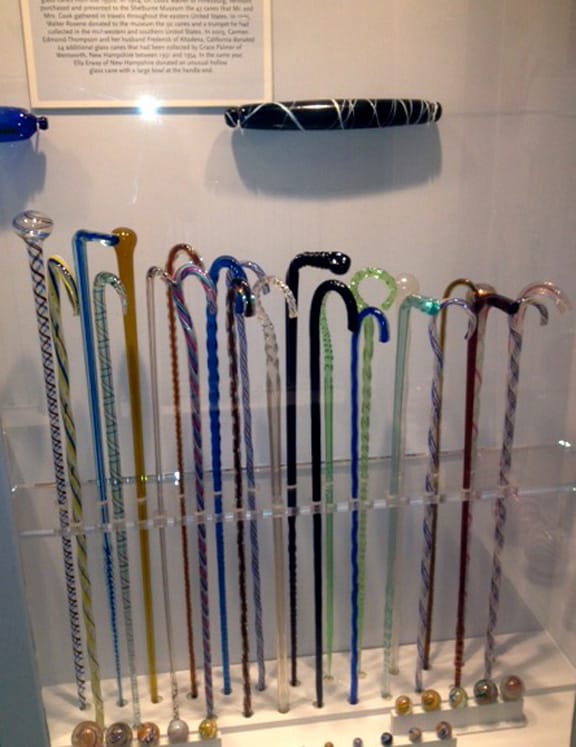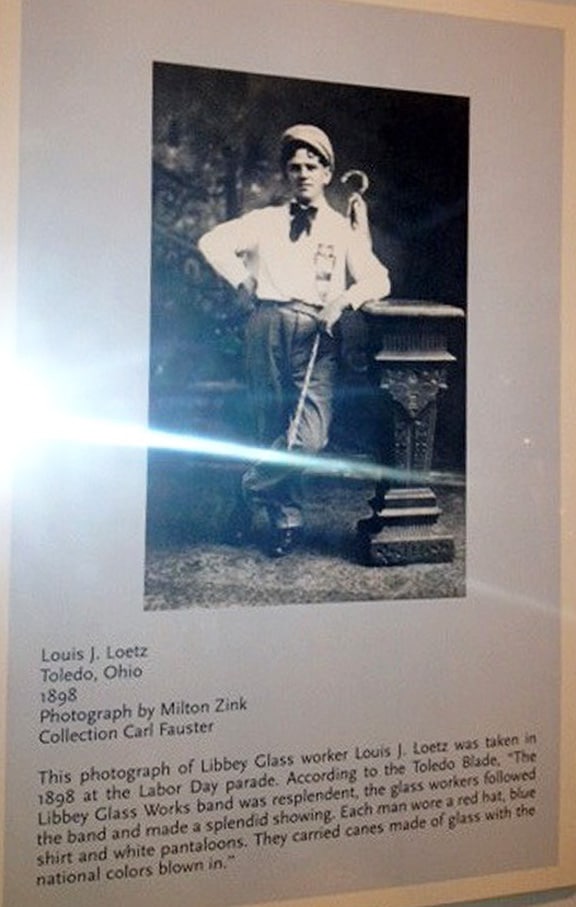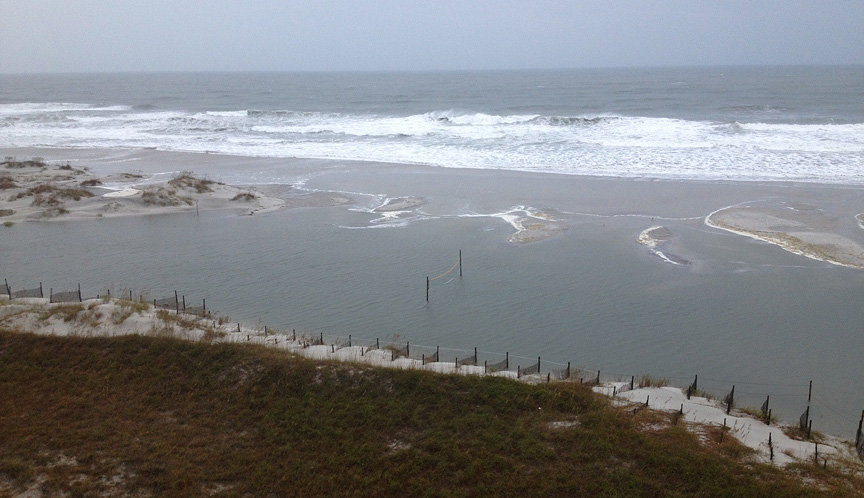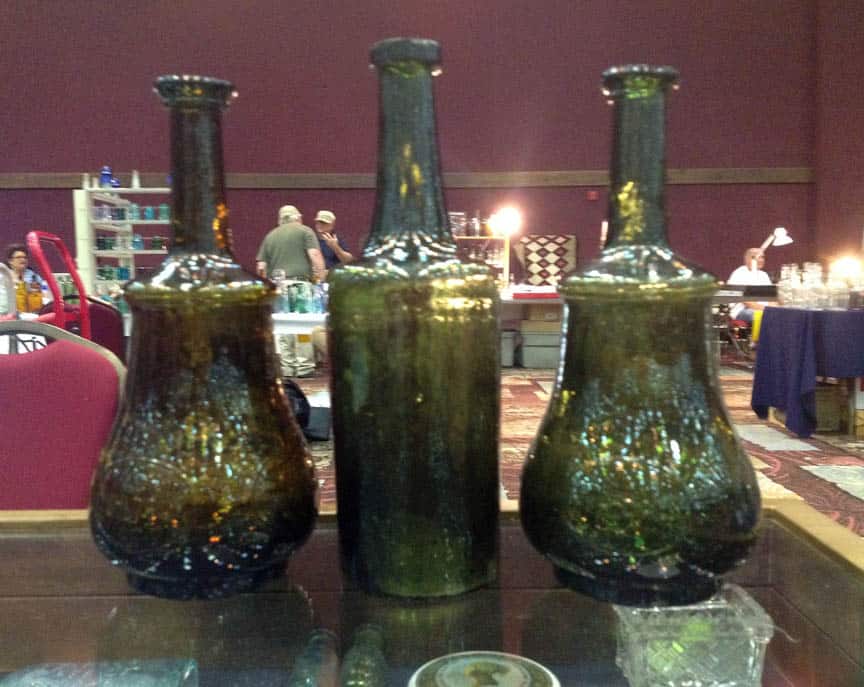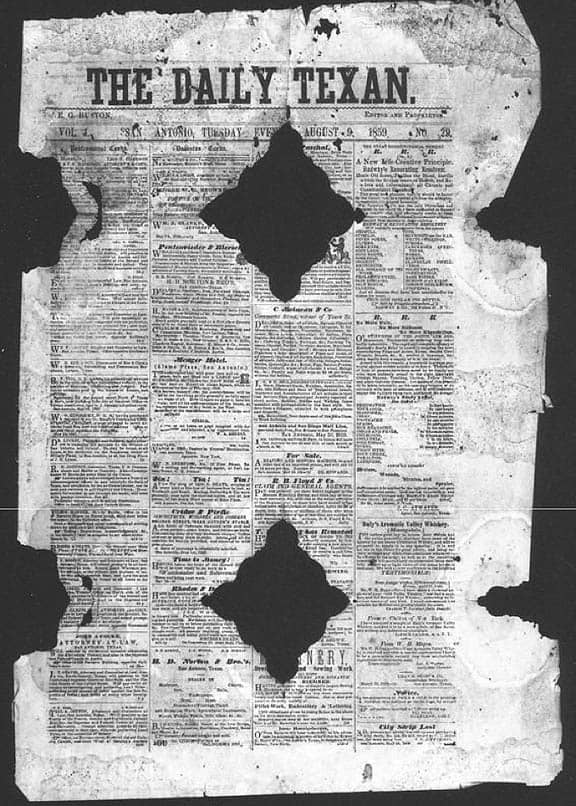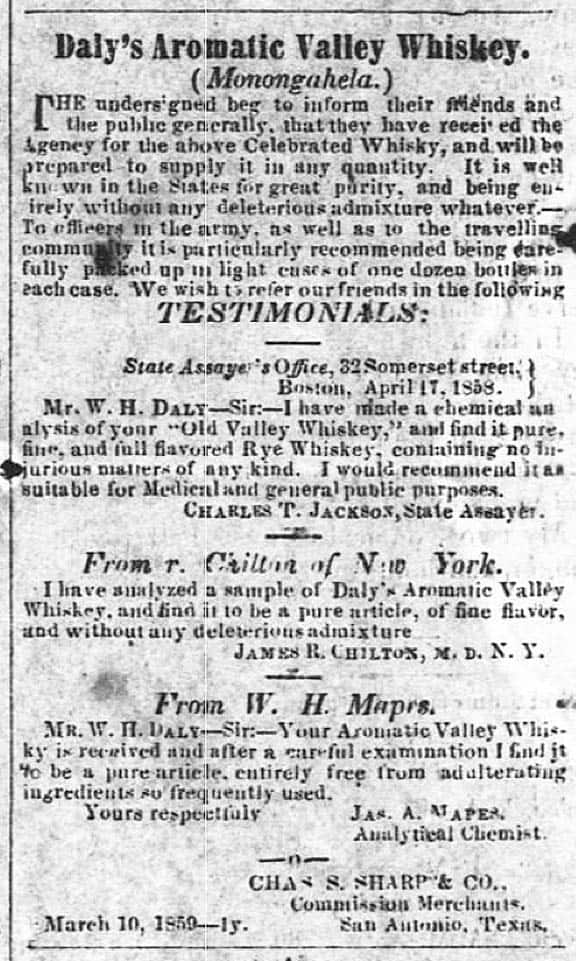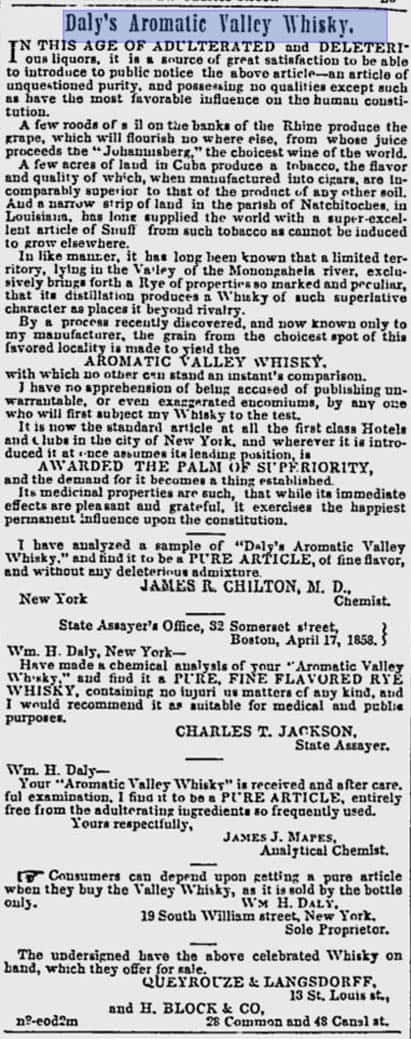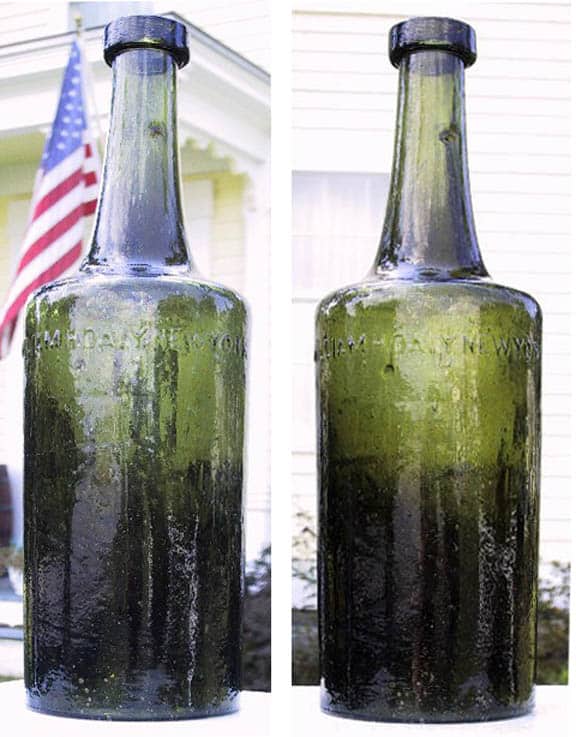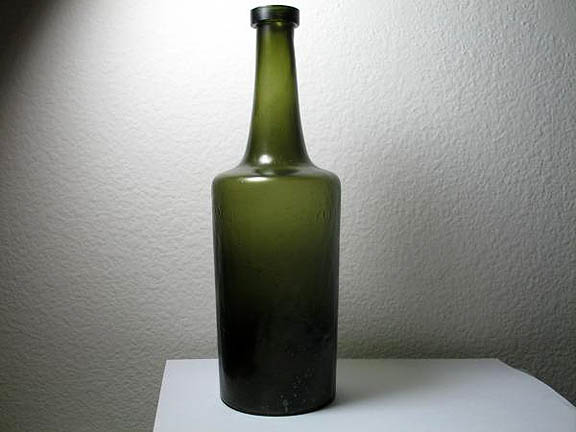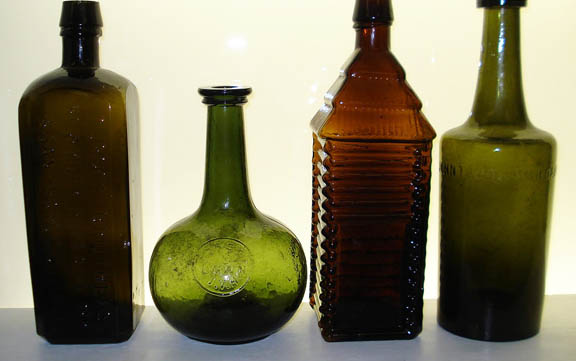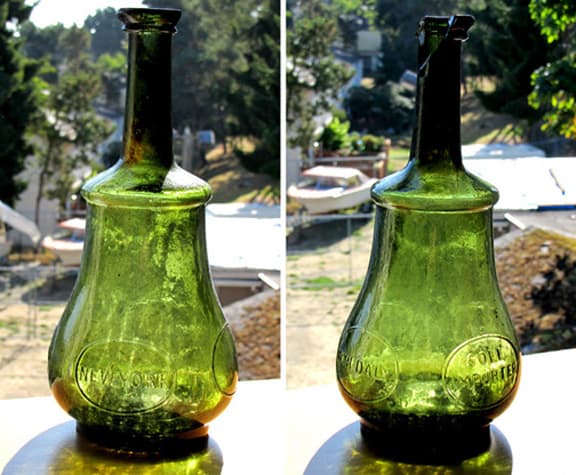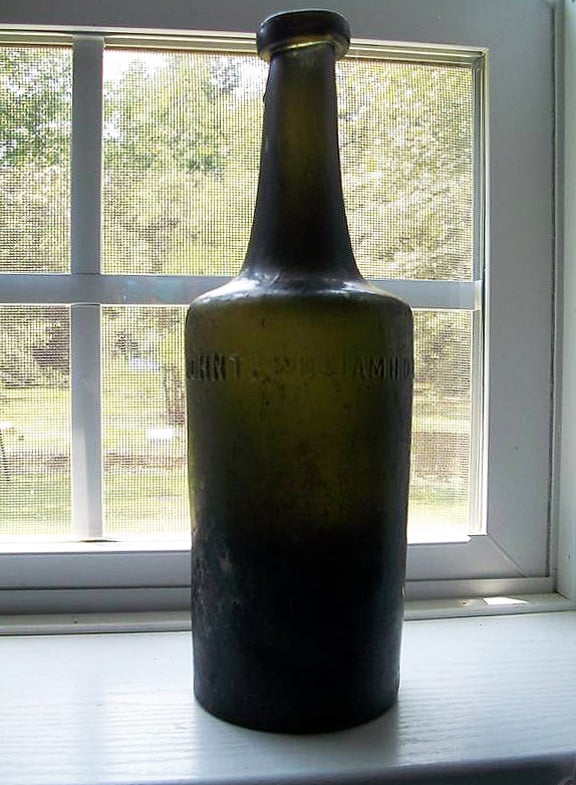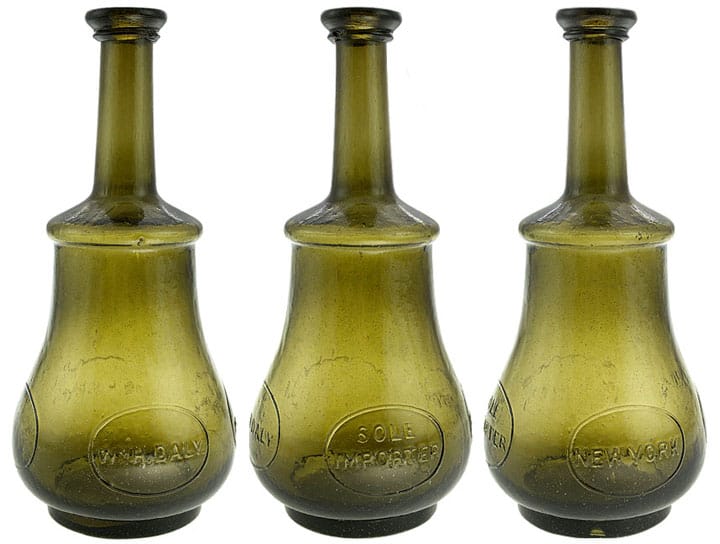American Glass Gallery | Auction #9
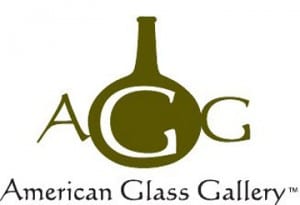 This is my second post reviewing the outstanding American Glass Gallery Auction #9 which is now online. Read: 1st post Historical Flasks worth watching in American Glass Gallery Auction #9. Great photography, good write-ups and a nice round-up of bottles. Visit Auction
This is my second post reviewing the outstanding American Glass Gallery Auction #9 which is now online. Read: 1st post Historical Flasks worth watching in American Glass Gallery Auction #9. Great photography, good write-ups and a nice round-up of bottles. Visit Auction
John Pastor and Liz Maxbauer certainly are hitting it out of the park with their stellar efforts with Antique Bottle & Glass Collector magazine and American Glass Gallery Auctions.
S O M E G R E A T B O T T L E S
Josee Johnson Fruit Jar
America, 1865. Aquamarine, cylindrical, short neck with ground lip and original heavy metal (likely iron), lid with a hardened rubber insert – smooth base, ½ gal., mint. The jar is enclosed in original wooden frame stamped along top end, “PAT’D MAY 16 – 65”. A metal thumbscrew (part of the wooden frame), is used to turn down and seal the metal lid against the lip of the jar. This is the only recorded example to date. See p.414, Standard Fruit Jar Reference, 2011.
“Jerry indicated that the jar, to his knowledge, remains unique!”
In a recent phone conversation with Jerry McCann, noted jar authority and publisher of the 2011 encyclopedic, 854 page The Standard Fruit Jar Reference, Jerry indicated that the jar, to his knowledge, remains unique! Jerry further commented that it is one of the most unusual closures ever produced and one that was probably never put in production. The jar represents one of the most complicated closures thus far known. The impractical nature of this closure likely doomed any chances for the commercial success of this jar. A very interesting and historically important jar.
“Western – Spice – Mills” Cathedral Peppersauce Bottle
America, 1860 – 1870. Brilliant yellow with a slight honey or topaz tone in the base and corners, square with arched gothic panels and a diamond pattern in the upper windows, applied round collared mouth with lower bevel – smooth base, ht. 8 ¾”, attic mint! Provenance: Ex. Dr. Burton Spiller, Sandor Fuss collections. The color is intense, vivid, and spectacular! Considered by many to be the finest peppersauce bottle known.
“Considered by many to be the finest peppersauce bottle known.”
Note: pictured in the book, Encyclopedia of Collectibles, Beads to Boxes, Time Life Books, page 139. This particular peppersauce bottle is absolutely one of brightest, most appealing, and prettiest bottles in the entire peppersauce / pickle or food bottle category. It is arguably one of the most attractive bottles in any category!
“Race & Sheldons / Magic / Waterproof / Boot Polish.”
Blacking Bottle, America, 1845 – 1855. Brilliant deep blue green, cylindrical with 10 flat panels, cone type shoulders, applied wide flared mouth – iron pontil scar, ht. 7 ¾”, virtually attic mint! Extremely rare, one of only two known examples in this large size (the other having a mouth chip). This bottle was found during Boston’s famous “Big Dig”, and luckily only required soap and water to clean to attic condition. Sandor Fuss collection. A very impressive bottle with intense color and brilliance, great multisided form, and nice large size!
“This bottle was found during Boston’s famous “Big Dig”, and luckily only required soap and water to clean to attic condition.”
“E. Waters / Troy. NY” Master Ink Bottle
America, 1845 – 1855. Brilliant clear yellowish green, cylindrical with fancy fluted shoulders, large applied flanged mouth – iron pontil scar, ht. 6 ¼”, near mint; (a minor, 1/8” flake on the edge of the applied mouth and a small, pinhead-size potstone on the reverse with a tiny, 1/8” flash). C#774. An extremely rare and beautiful master ink, nicely whittled, with great clarity and outstanding color. Ex. Ed & Kathy Gray collection.
“it is believed to be possibly the finest example known to date.”
Note: it is believed that virtually all examples of this impressive, ornate master ink have some form of damage. The flaws on this one are extremely minor and it is believed to be possibly the finest example known to date.
“W. Wolf / Pittsburgh” Figural Whiskey
Probably a Pittsburgh district glasshouse, 1850 – 1860. Deep cornflower or light sapphire blue, squatty barrel form, applied round collared mouth with ring – red iron pontil scar, ht. 7 ¾”; (two tiny, pinhead flakes that are easy to miss on the upper rings at the side of the bottle and two shallow pinhead flakes on the center rings at the side; some dried interior calcium or mineral deposits in the upper shoulder and neck area). An iconic bottle, one of two known examples!
“The last and only other example was sold in the legendary Charlie Gardner Auction more than 35 years ago in 1975.”
Note: This beautiful blue barrel is certainly one of the most important bottles known from the Pittsburgh area. It is considered by many to be one of the top whiskey bottles and would likely be a shoe-in on almost anyone’s “most desirable barrel” list. As mentioned, it is only the second example known. The last and only other example was sold in the legendary Charlie Gardner Auction more than 35 years ago in 1975. The noted condition items mentioned are very minor. The bottle has outstanding color, character, eye appeal and rarity!
For more information on how this amazing bottle was discovered, see the October issue of Antique Bottle & Glass Collector.
Read More: Barrel Series – W. Wolf found at Thrift Shop for $1.00

